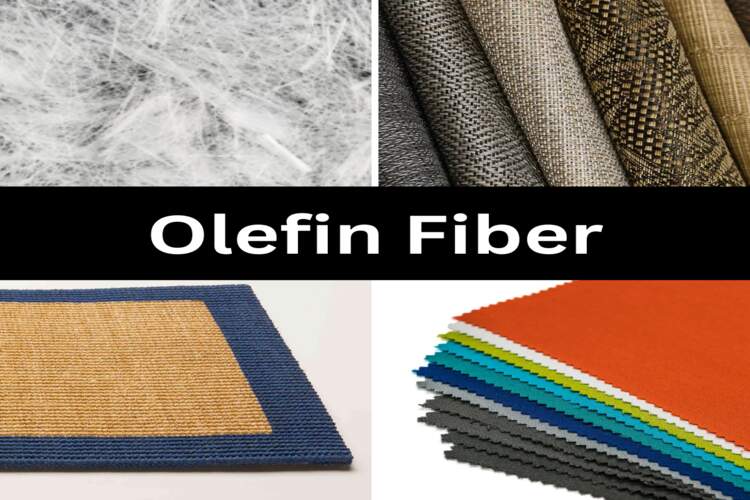What is Olefin Fiber?
Olefin fiber, a synthetic material derived from polyolefins like polypropylene or polyethylene, is crafted through meticulous polymerization using specialized catalysts. This process yields a chain structure with minimal branching. Recognized for its resilience against moisture and chemicals, polypropylene, boasting a higher melting point, takes precedence in general textile applications. Despite olefin fibers resisting traditional dyeing methods, the introduction of vibrant colors is achieved by infusing dyes directly into the polymer before or during the melting process. Olefin fibers exhibit a rod-like structure with a smooth, formless surface, distinguishing them from rubber fiber polyolefins.
History of Olefin Fiber
The roots of olefin fiber can be traced back to 1953 when Italian scientists Giulio Natta and Karl Ziegler pioneered a catalyst system, laying the groundwork for its production. By 1960, the United States had firmly entrenched olefin production, driven by a straightforward manufacturing process requiring minimal advanced equipment. The resulting textile fibers, being lightweight, durable, and resistant to wear, found widespread use across various applications.
Is Olefin Fiber Sustainable?
Despite its petroleum-derived origin, olefin fabric, also known as polypropylene, has gained traction in the textile industry due to its sustainability advantages. The production process consumes less energy and water compared to other synthetic fibers, resulting in a lower carbon footprint and reduced greenhouse gas emissions. Olefin’s resistance to stains, moisture, and mildew diminishes the need for chemical treatments, enhancing product longevity. Notably, olefin fiber is recyclable, minimizing waste sent to landfills and promoting resource conservation.
Additionally, the durability of olefin fabric enables it to withstand harsh weather conditions, UV radiation, and abrasion, contributing to long-term energy and resource conservation.
Properties of Olefin
- Water-Resistant: Olefin fiber efficiently repels moisture, preventing absorption and facilitating easy drying. This water-resistant quality enhances its durability against abrasion and mold.
- Colorfast: Olefin fiber maintains vibrant colors for an extended period, undergoing dyeing during processing and displaying natural resistance to sunlight.
- Versatile: Olefin fiber’s versatility extends to various applications, including ropes, carpets, wallpaper, and other high-quality products.
- Eco-Friendly: Introduced in 1967, olefin fiber’s environmentally friendly nature is attributed to its minimal by-products during production, ensuring efficient ingredient utilization that can be recycled.
- Easy to Clean: Olefin fiber repels stains, and its water resistance simplifies the cleaning process, making it suitable for outdoor furniture or automotive interiors.
- Strong: Olefin is inherently strong, making it suitable for durable products like automobile interior fabric, rugs, chairs, and wallpapers.
- Lightweight: With a density of 0.92 grams per cubic centimeter, olefin is the lightest common fiber, making it ideal for lightweight summer clothing.
Advantages of Olefin Fiber
- Resists wear and tear effectively.
- Rapidly draws moisture away and dries swiftly.
- Strong and lightweight.
- Withstands fading, mildew, chemicals, and insects.
- Highly resistant to stains, easy to clean, and maintains colorfastness.
Disadvantages of Olefin Fiber
- Not suitable for most clothing.
- Dyeing is challenging due to low absorbency.
- Can generate static electricity and pilling.
- Prone to heat sensitivity and approaching hydrophobic characteristics.
- Friction can cause damage.
Uses of Olefin
- Apparel: Activewear, sportswear, socks, thermal underwear, and lining fabrics.
- Automotive Fabrics: Interior use in kick panels, package shelves, seat construction, truck liners, etc.
- Home Furnishings: Indoor and outdoor carpets, carpet backing, upholstery fabrics, wall coverings, furniture, and bedding construction.
- Industrial Applications: Carpets, disposable and durable nonwoven fabrics, ropes, filter fabrics, bagging, and geotextiles.
You may also like:
- What is Linen Fiber? Properties, Structure, and How It Made?
- Identification of Textile Fibers
- What is Jute Fiber? Properties, Advantages and Disadvantages.
- What is Hemp Fiber? Properties, Advantages and Disadvantages.
- What is Ramie Fiber? Properties, Advantages and Disadvantages.
- What is Sisal Fiber? Properties, Structure, and How It Made?
- Pina Fiber: History, Properties, Production Process
- Coir Fiber: Properties, Production Process and Advantages
- Rayon Fiber: History, Properties, Advantages and Disadvantages
- Acrylic Fiber: History, Properties, Advantages and Disadvantages
- Nylon Fiber: Properties, Advantages and Disadvantages
- Silk Fiber: History, Properties, Production Process
- Wool Fiber: History, Properties, Production Process
Share this Article!

